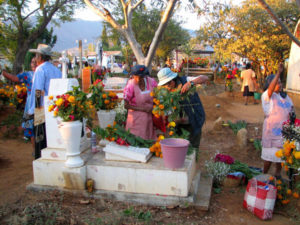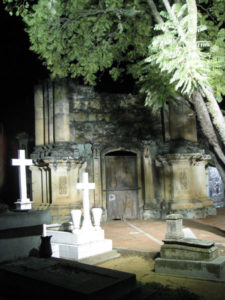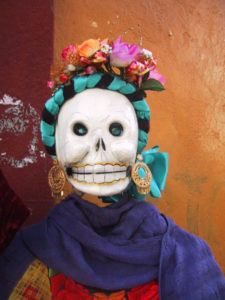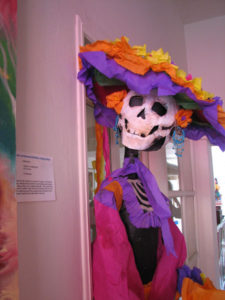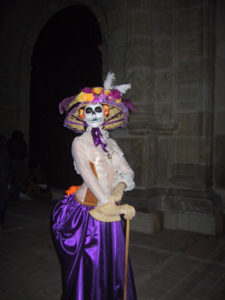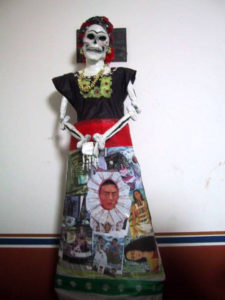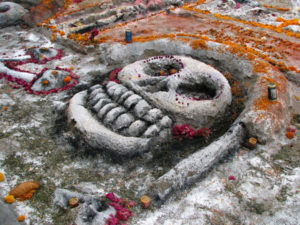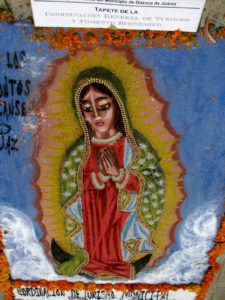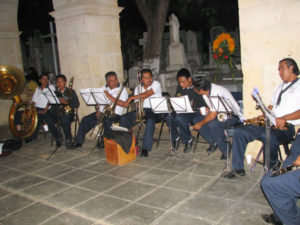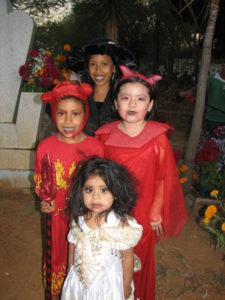Day of the Dead, one of the most important celebrations in Mexico, is understandably difficult for foreigners to fully comprehend. Cemeteries full of families, flowers, food, and music seem daunting to the uninitiated. It took me many years to “get” it, to realize that it’s okay to venture into graveyards and join the festive mood. Even today I participate shyly and timidly, which I think is good etiquette. Although most families welcome graveside gawkers, not all do.
Day of the Dead is actually a misnomer because departed souls return between October 28 and November 2, and festive preparations of altars and sand sculptures begin days earlier. Throughout the city, you’ll find calaveras, (costumed skeletons), and comparsas (parades).
Near Oaxaca’s main cemetery, called El Panteón, flower vendors and steamy food stands abound. Musical groups perform inside and outside the cemetery. Competitions of creatively decorated altars and sand sculptures attest to public involvement in the occasion. Personally, I prefer the ambience of cemeteries in smaller villages and pueblos, which are less touristy, but still as festive, with all-night vigils the norm. Unobtrusively, I aim my camera only at those who welcome me.


